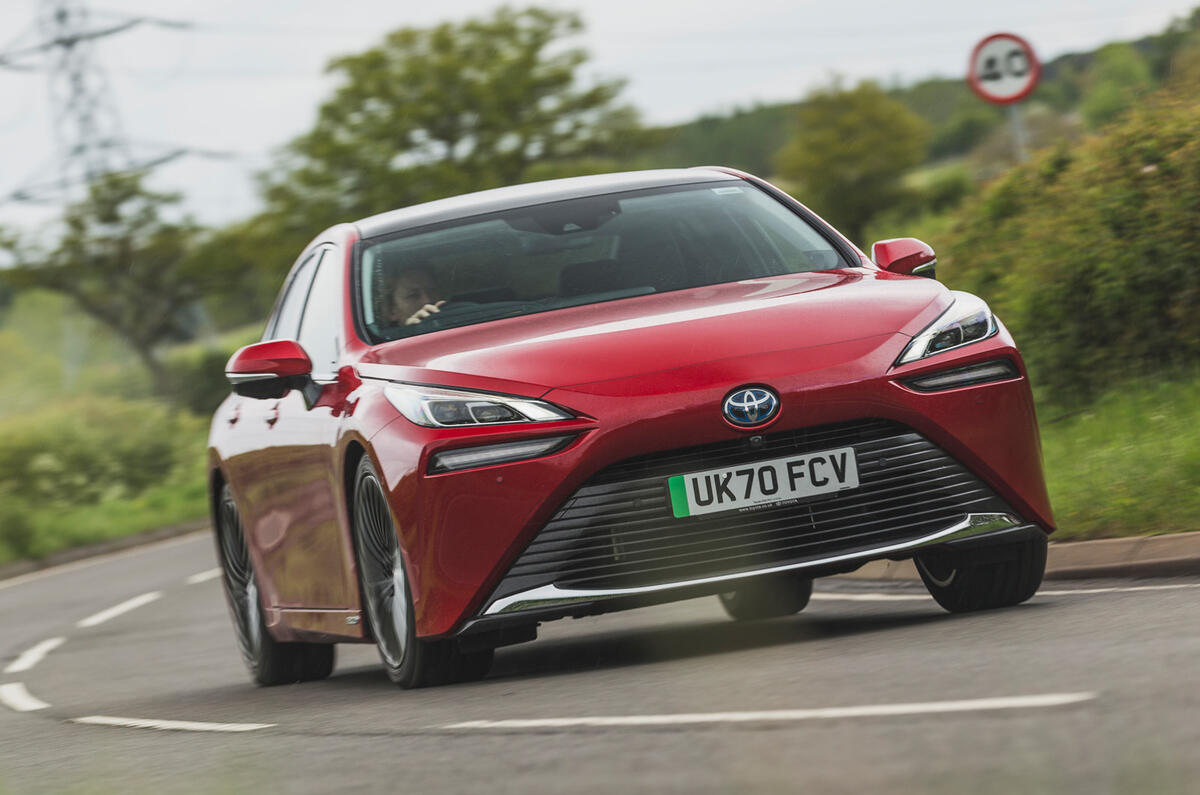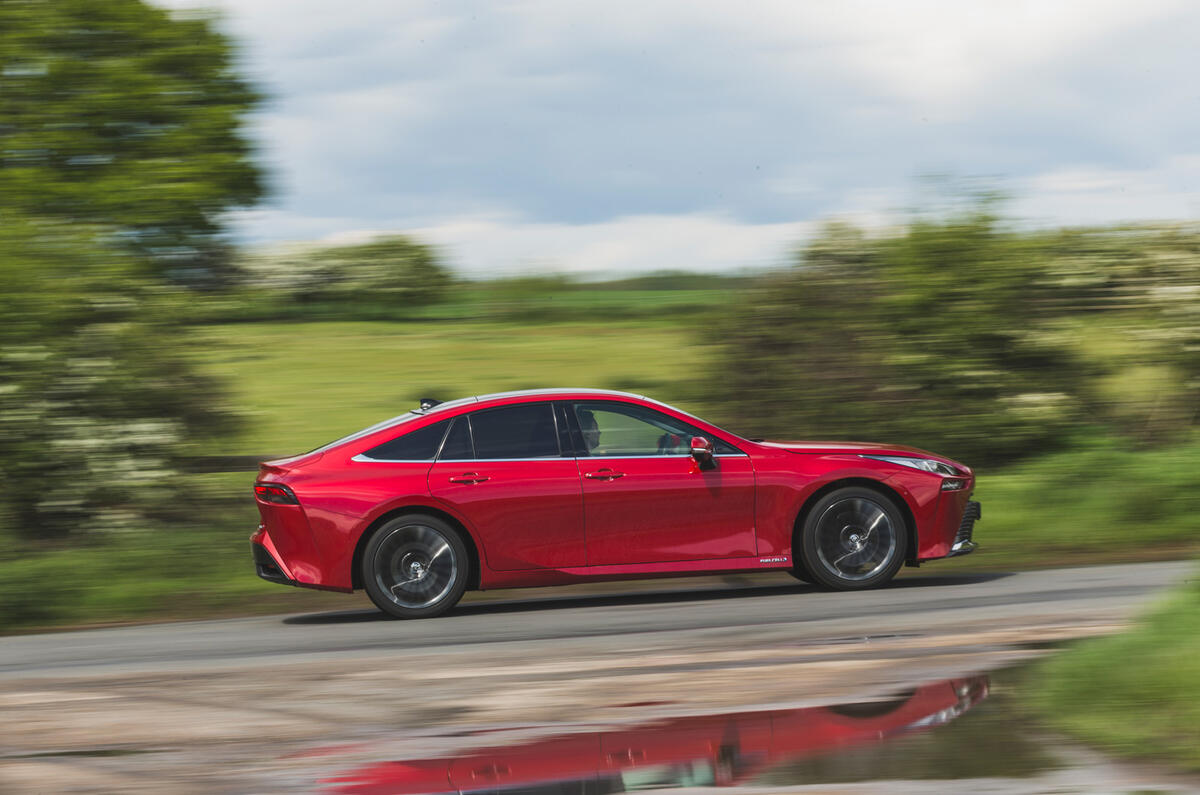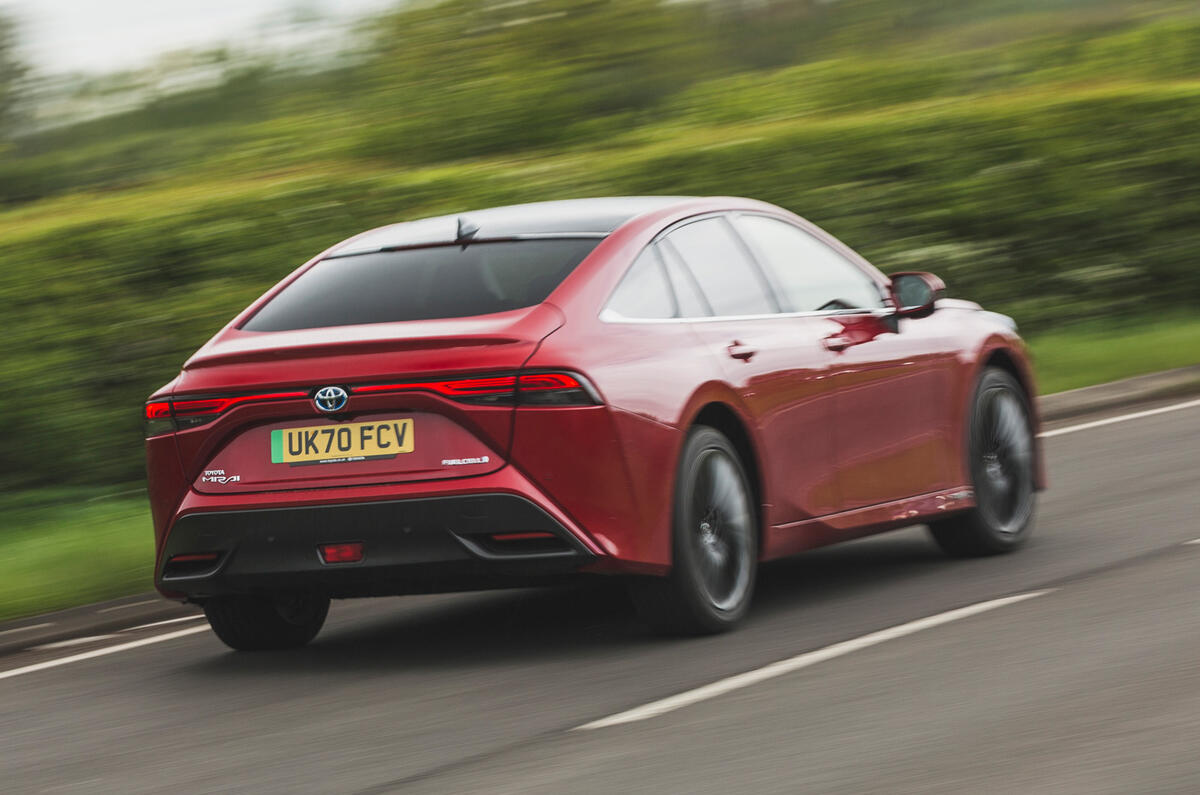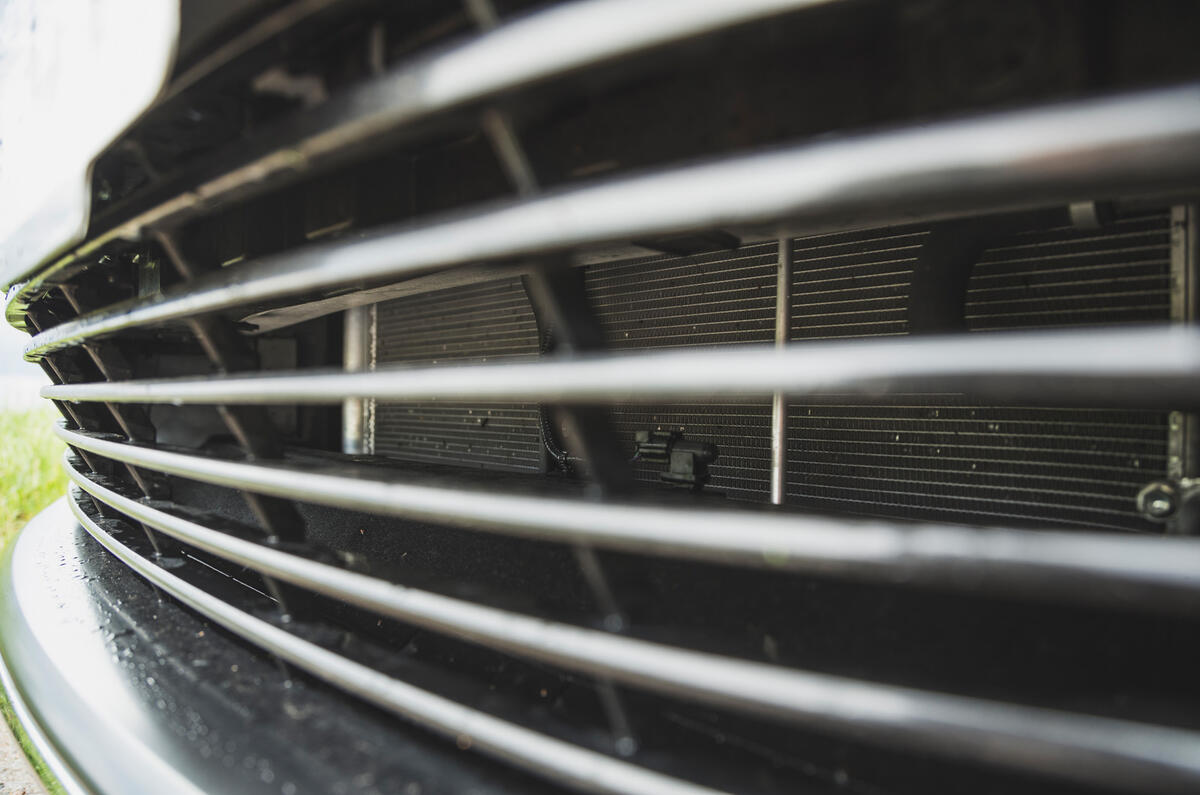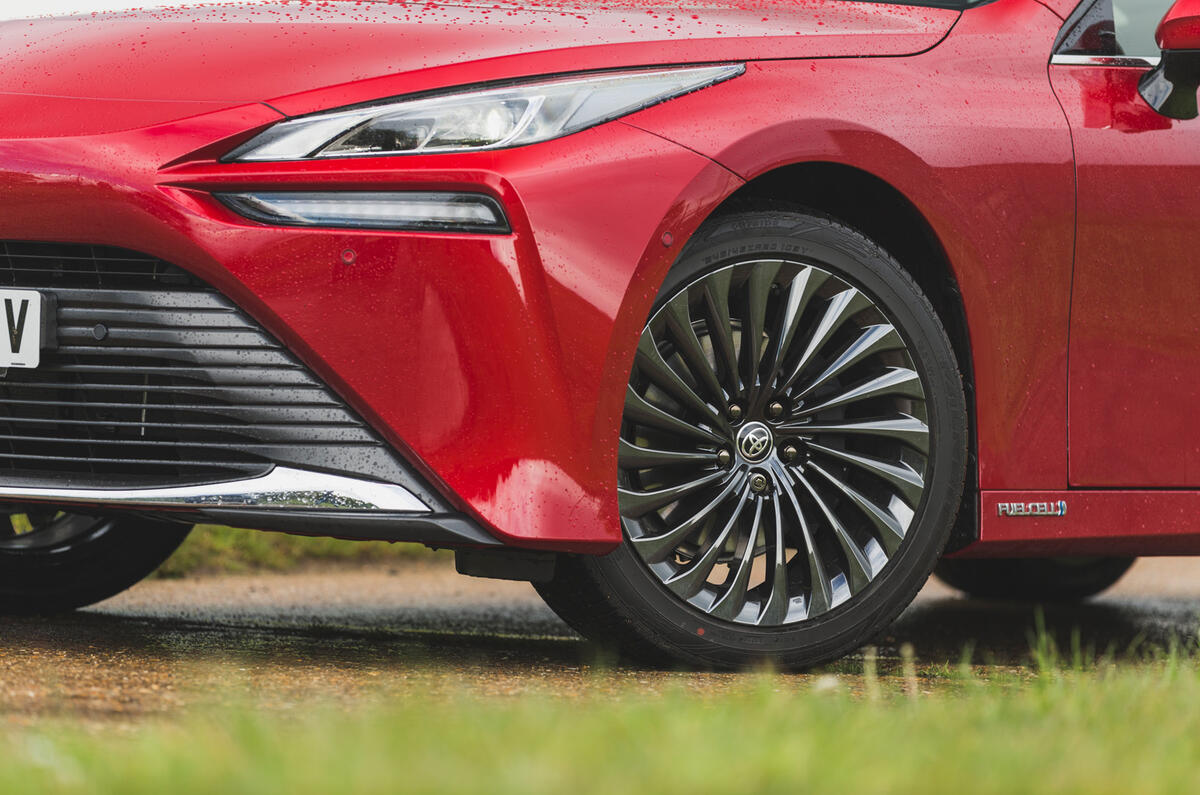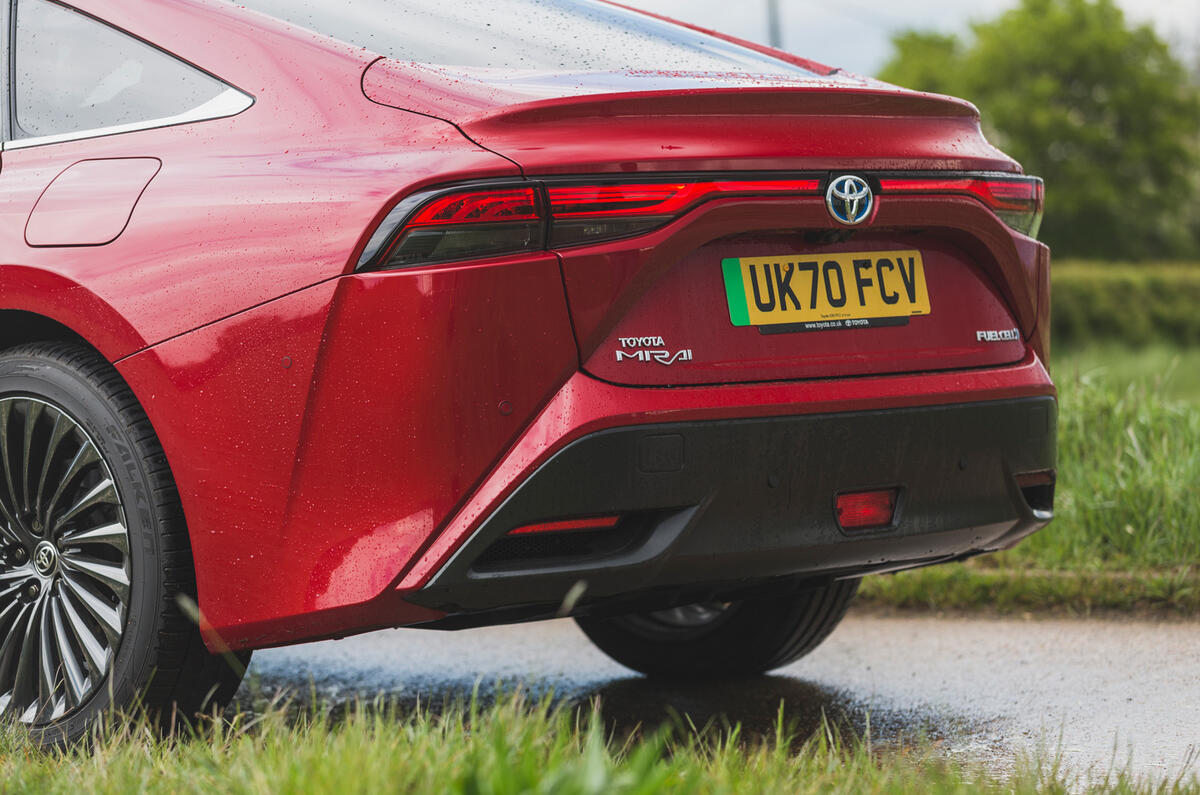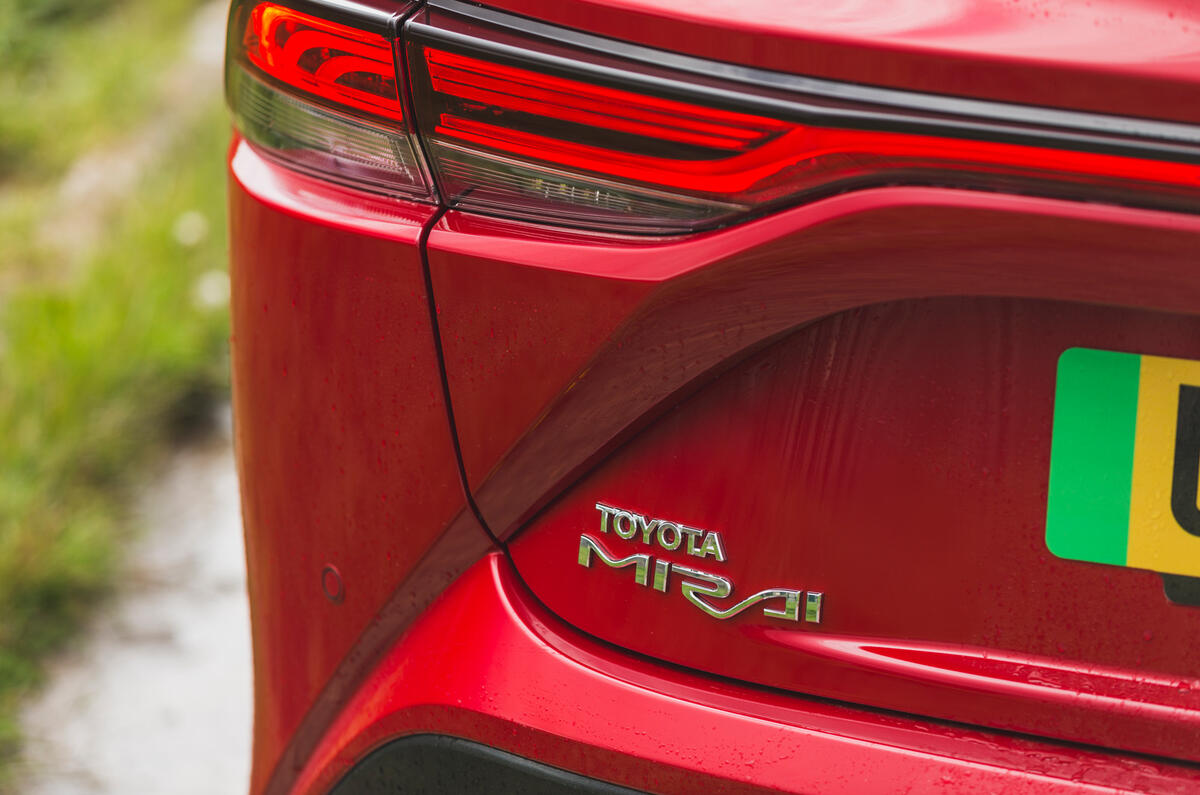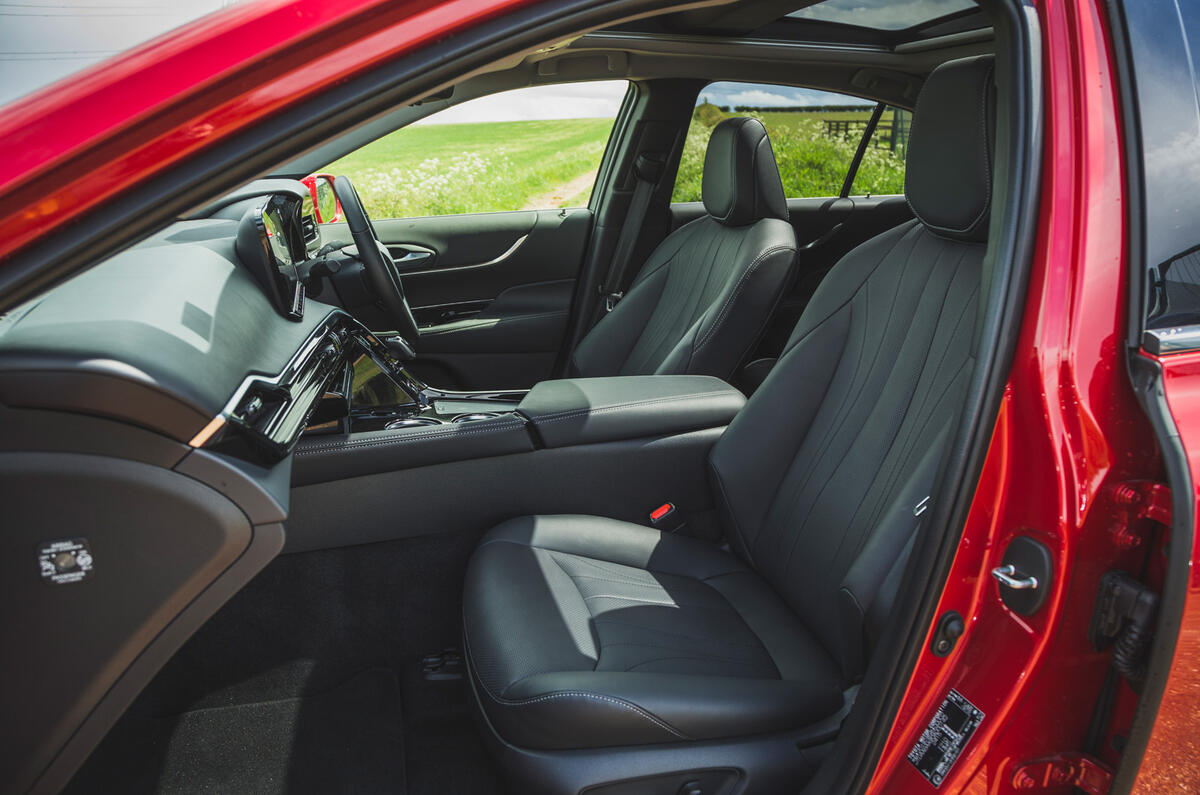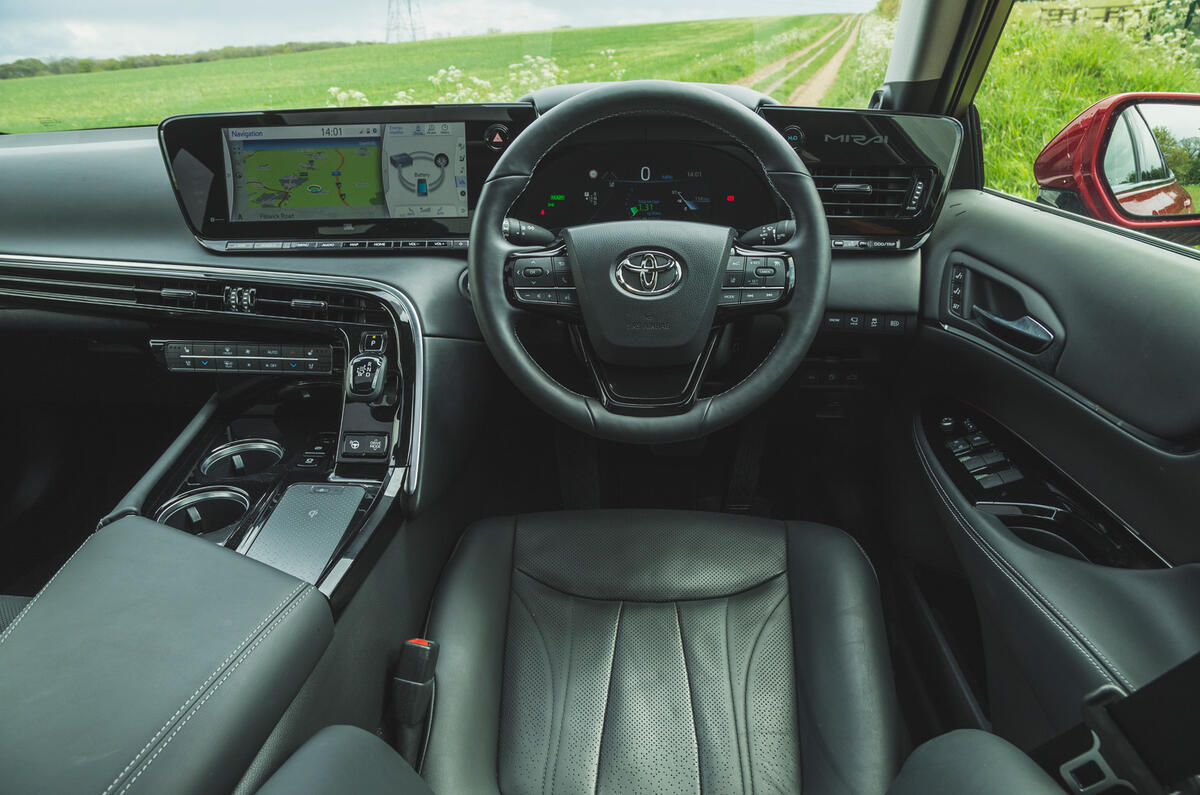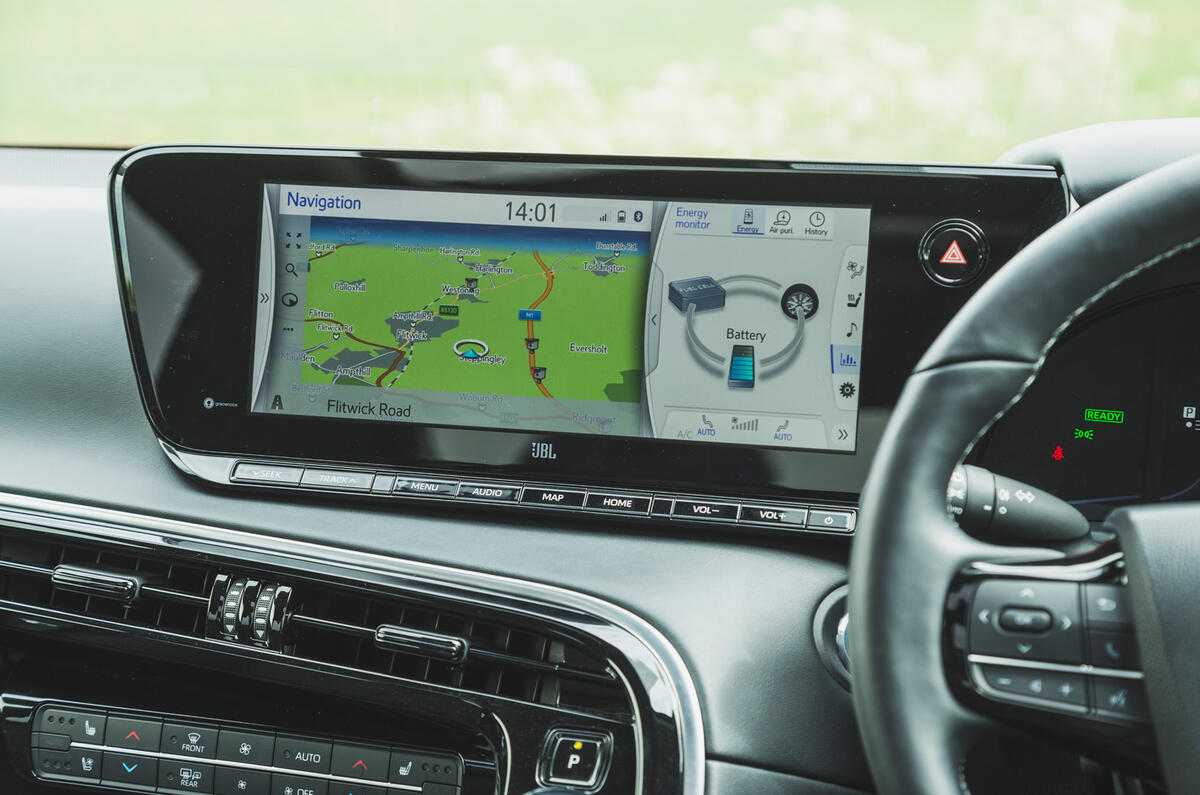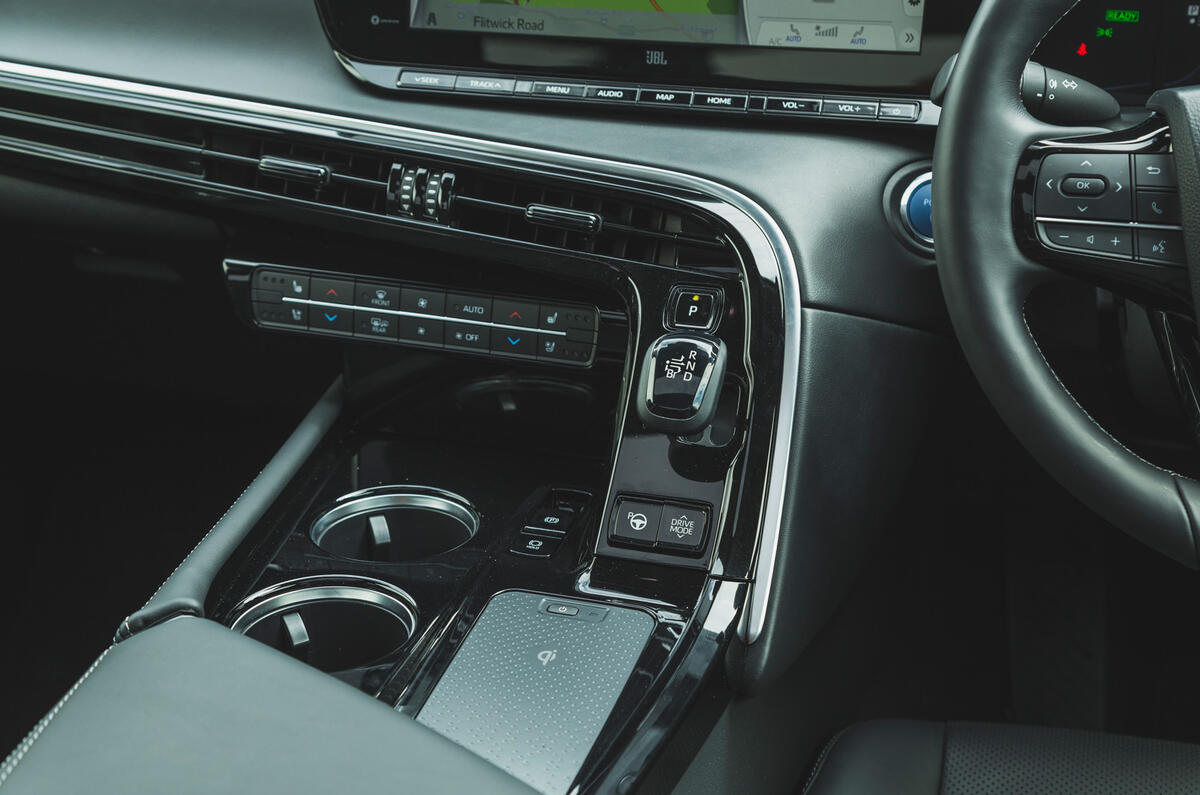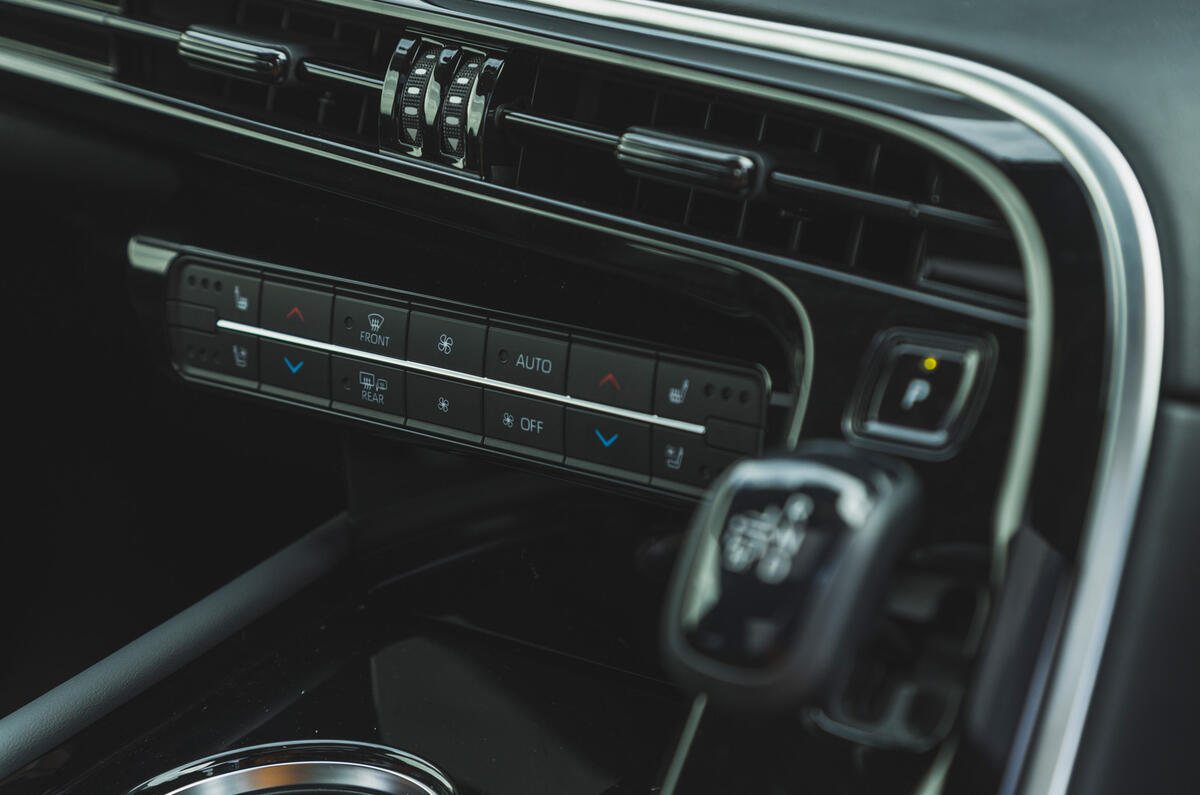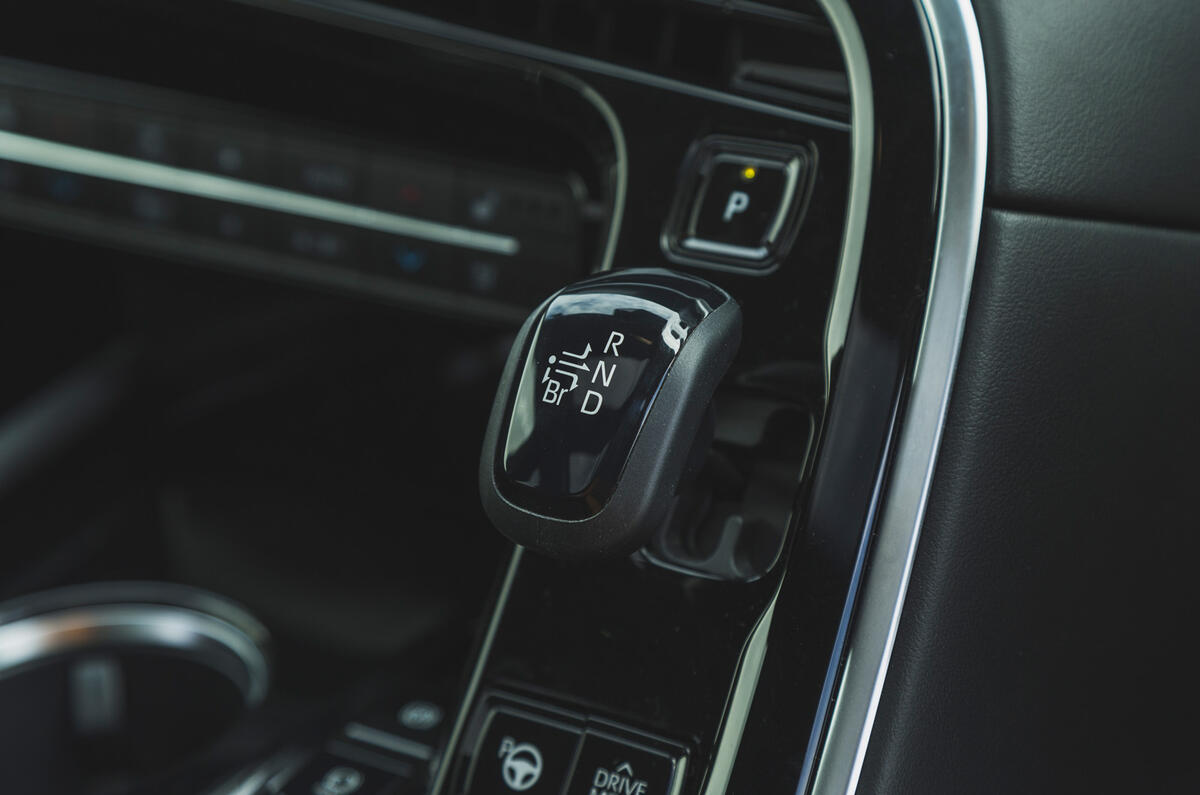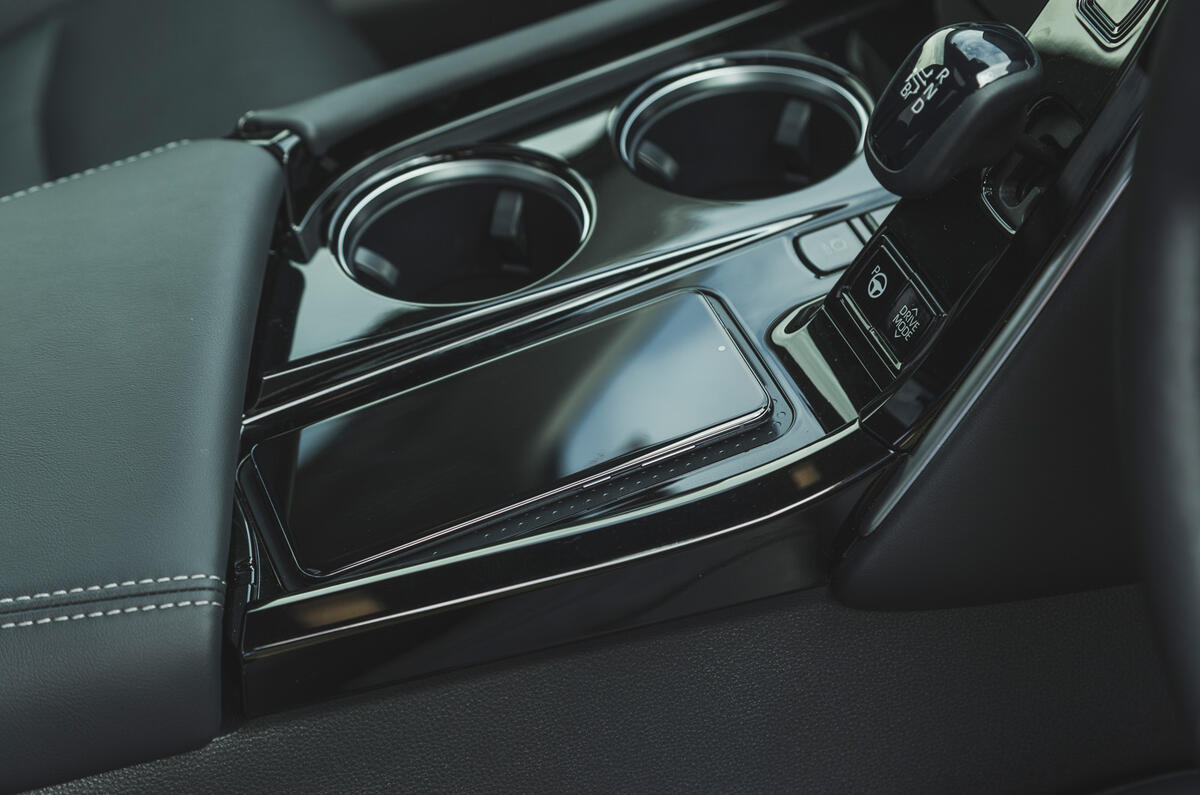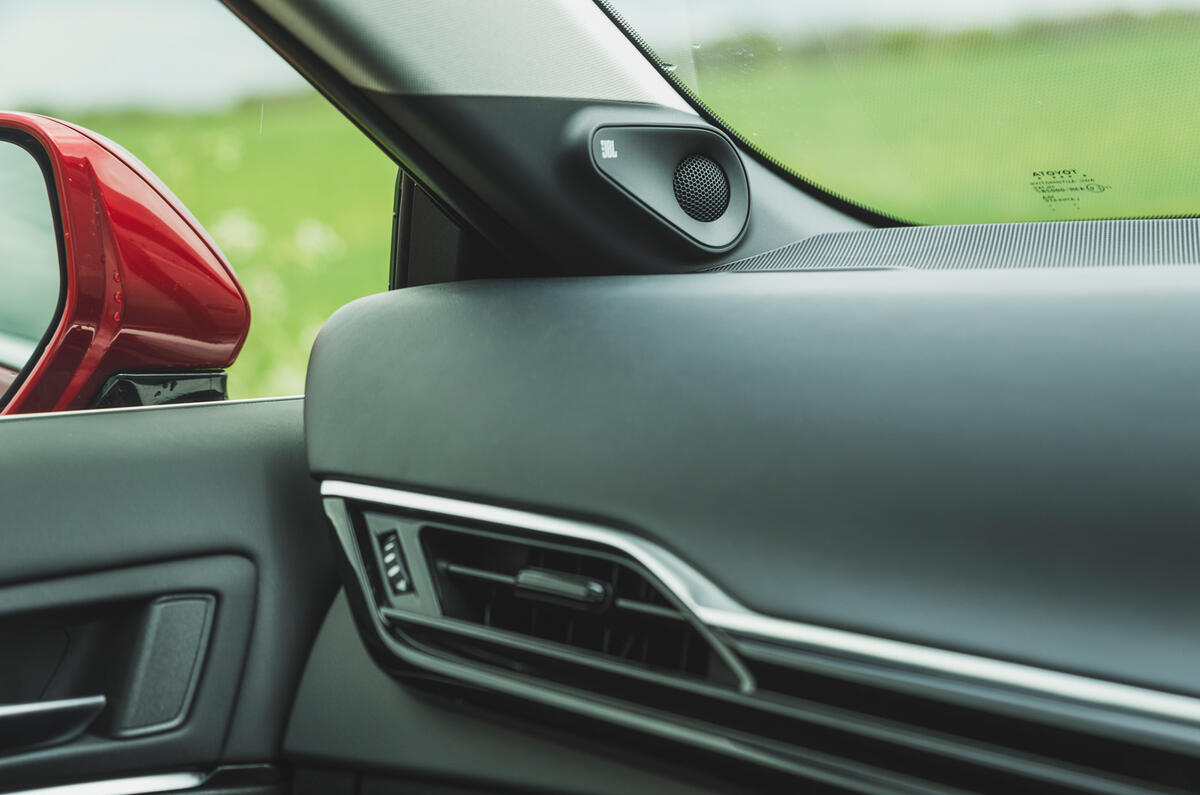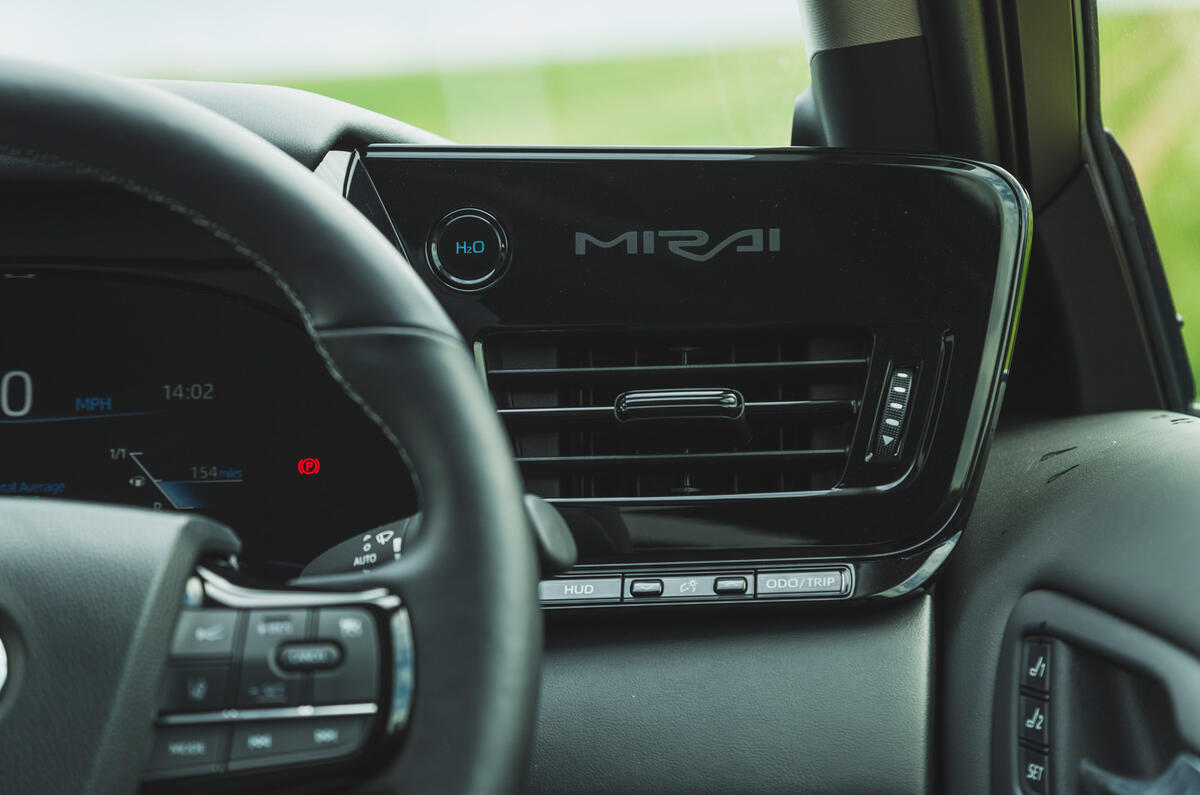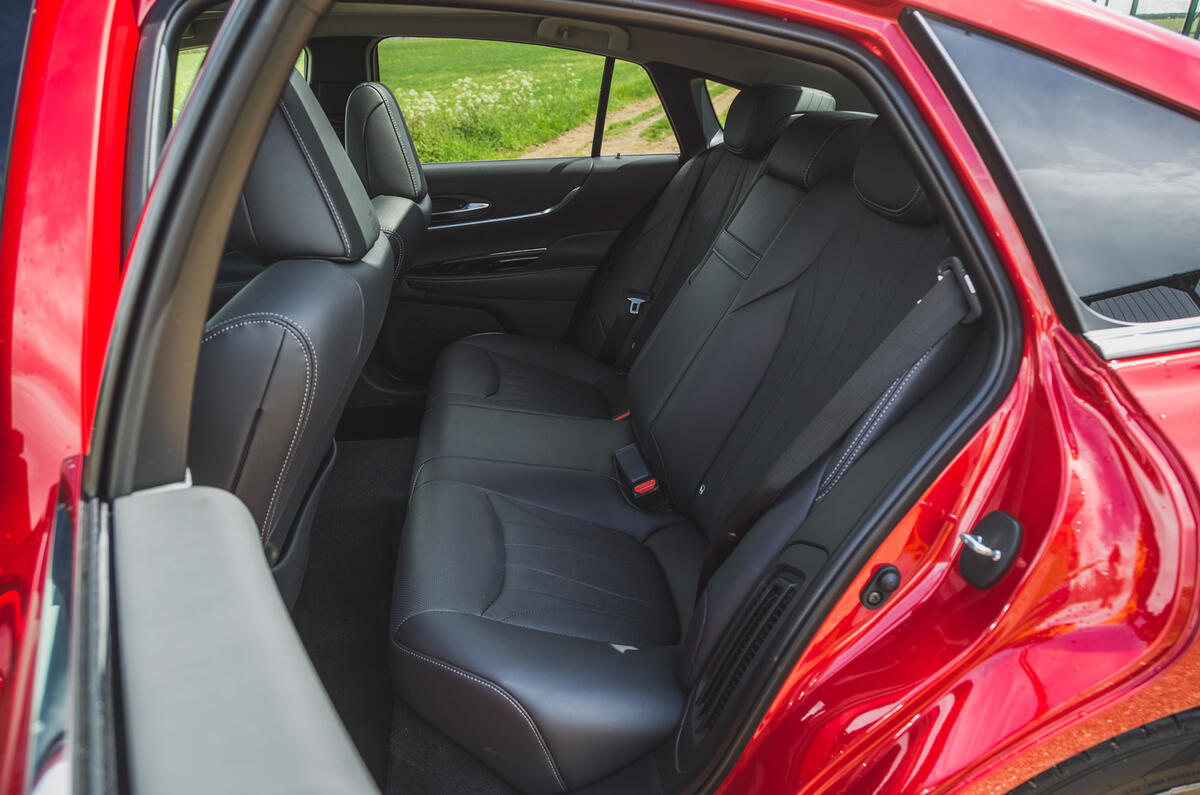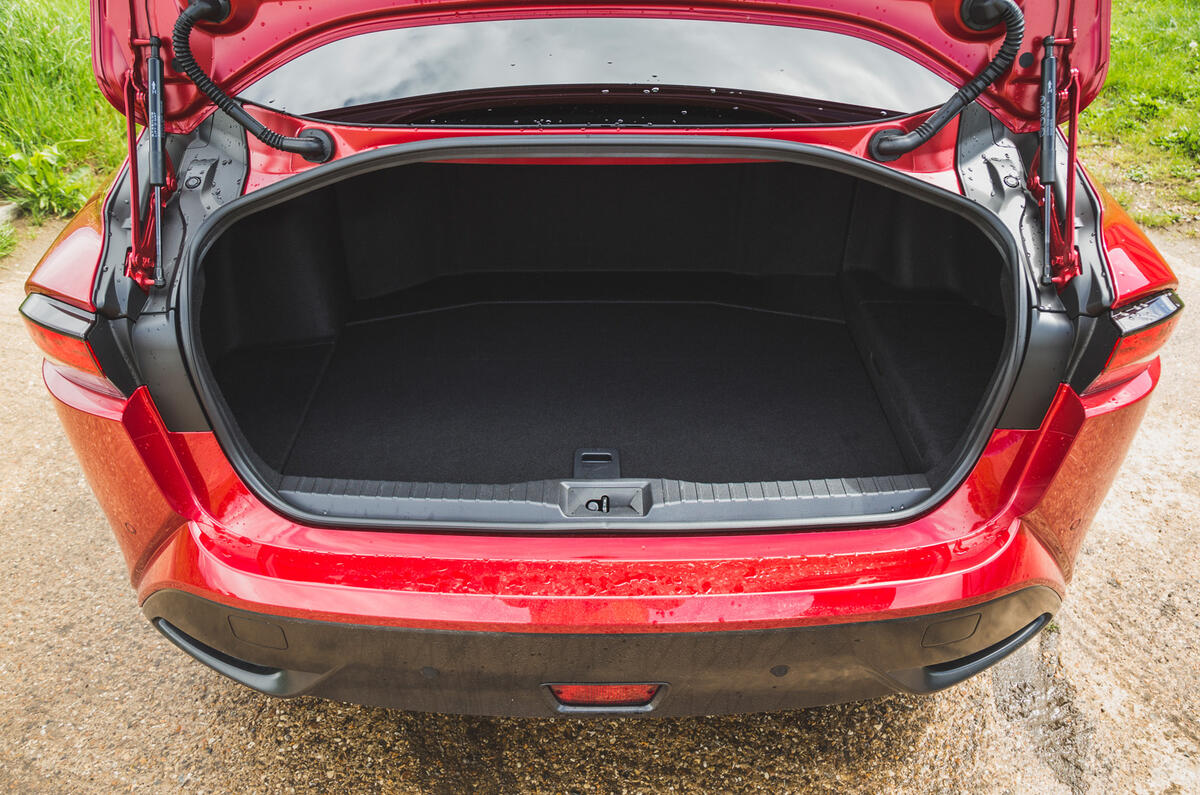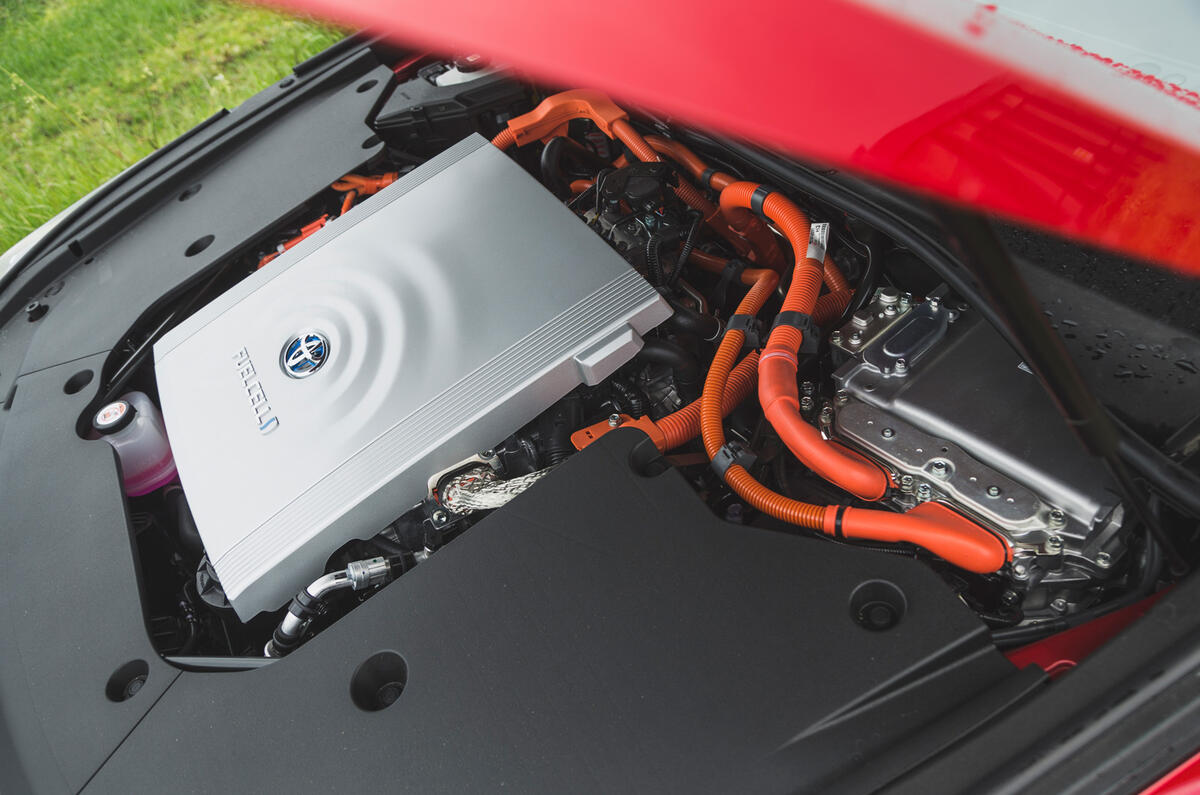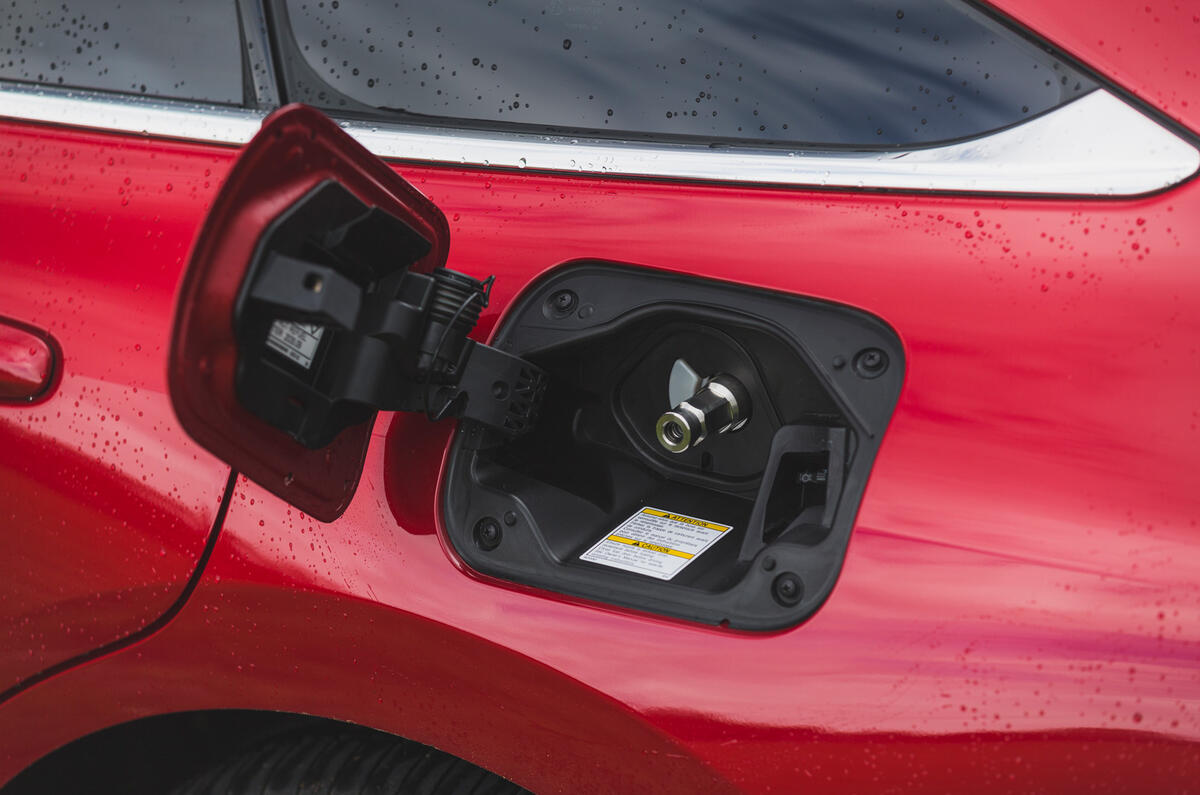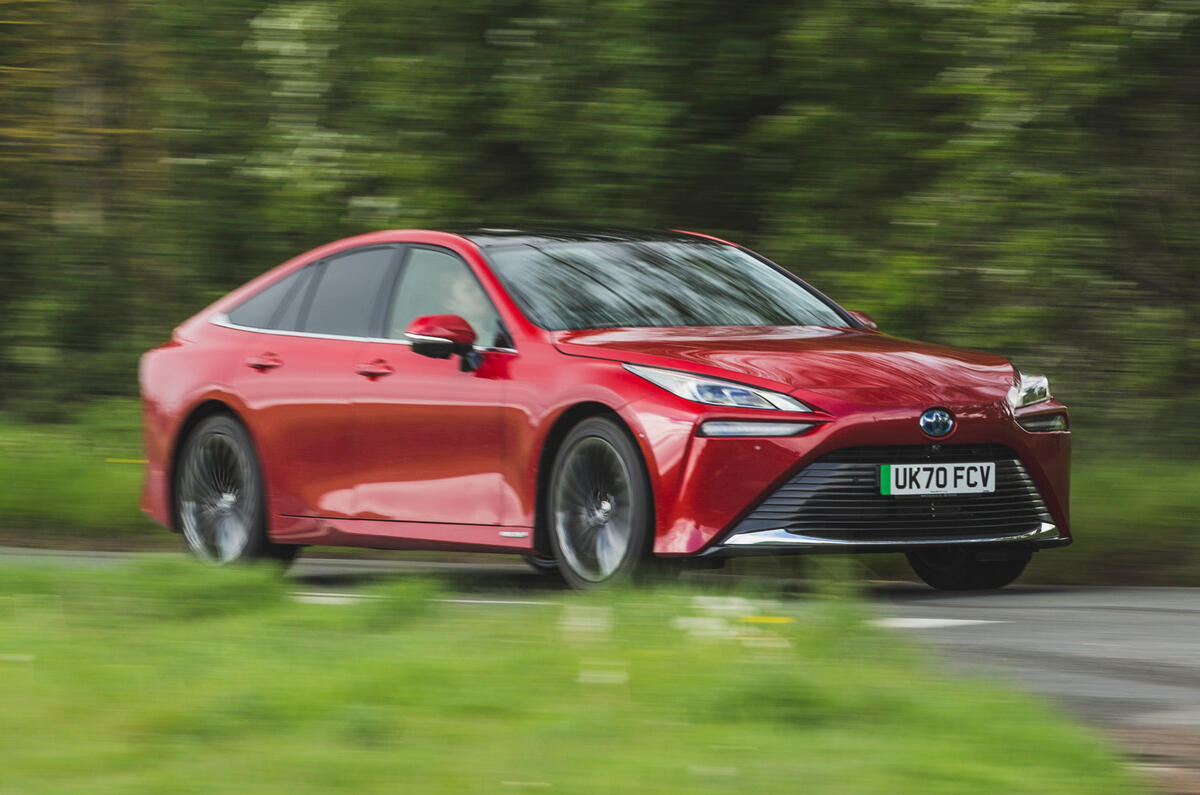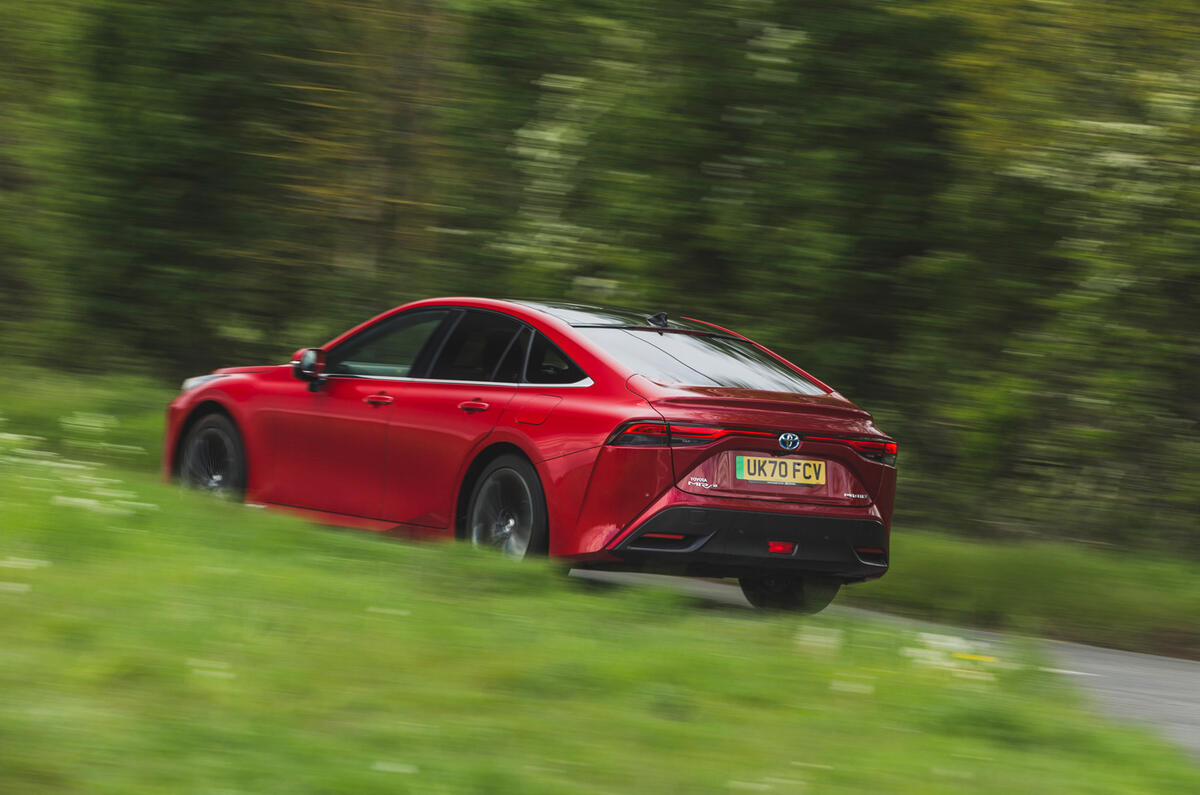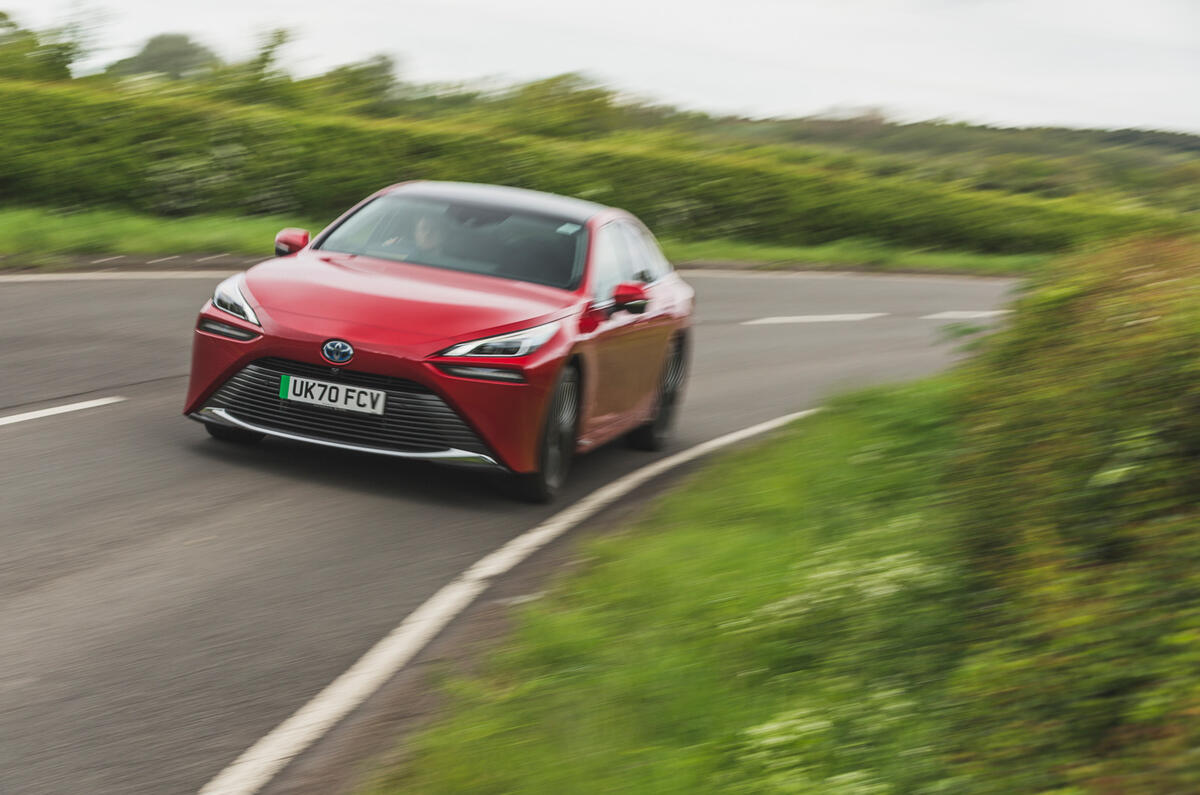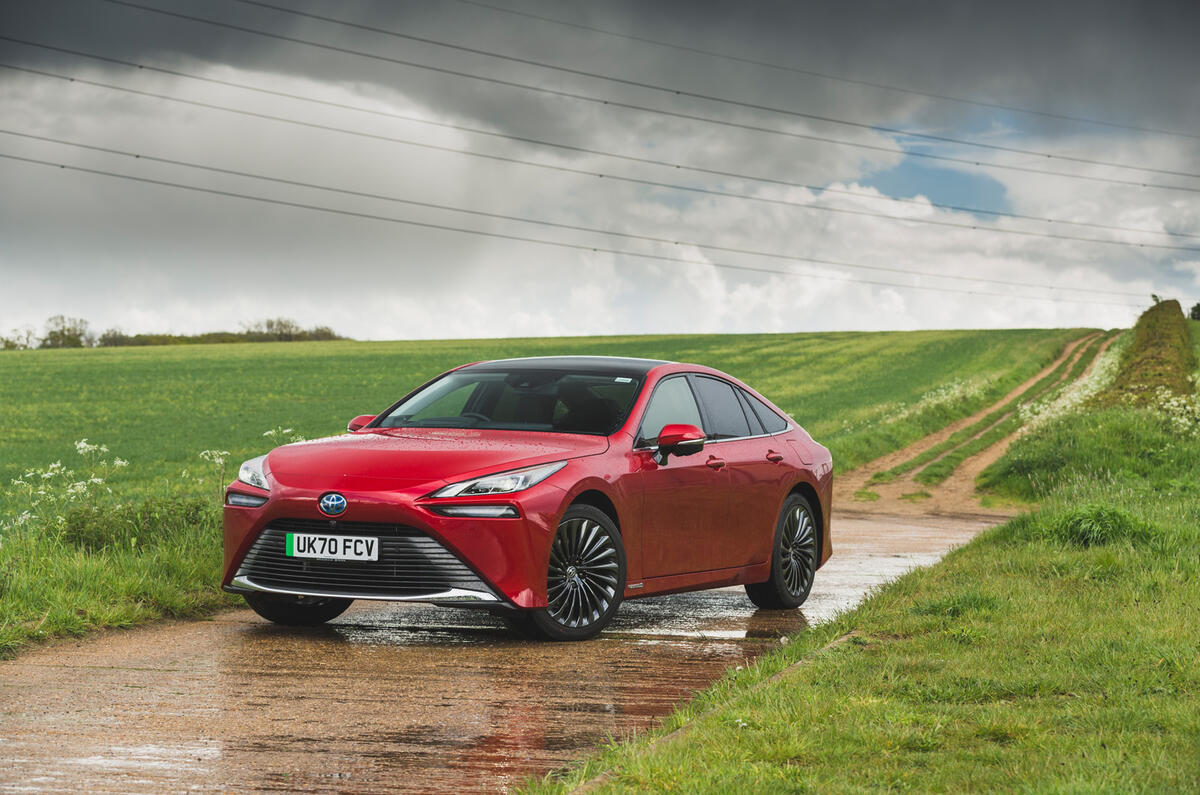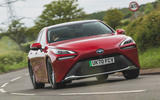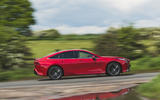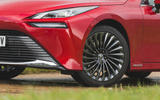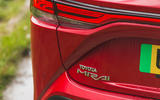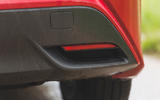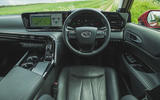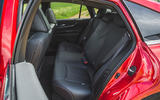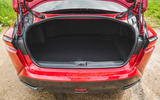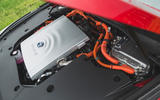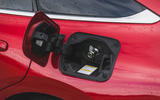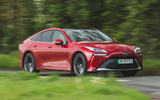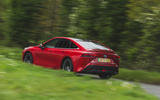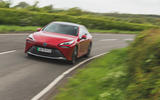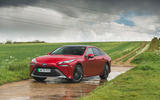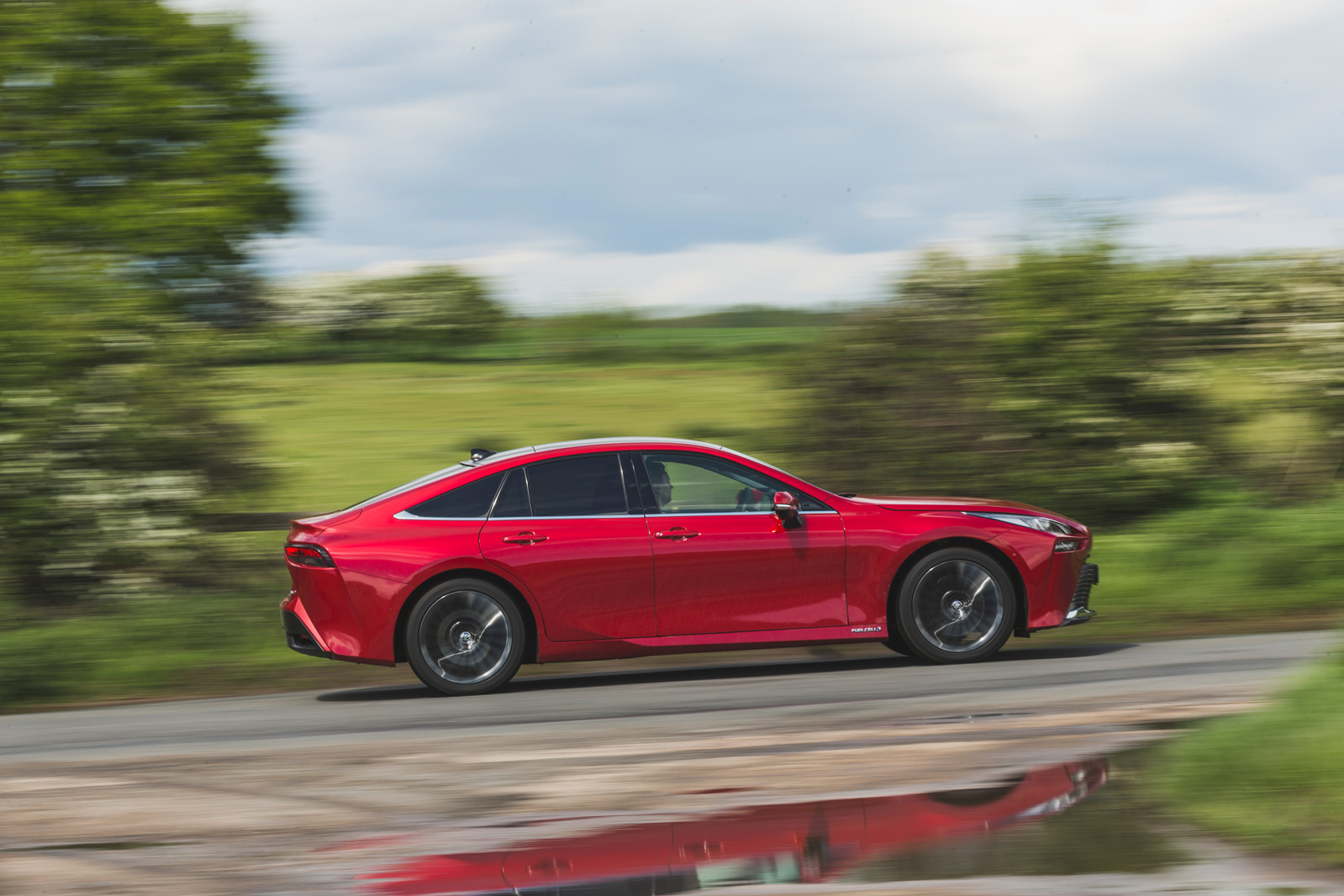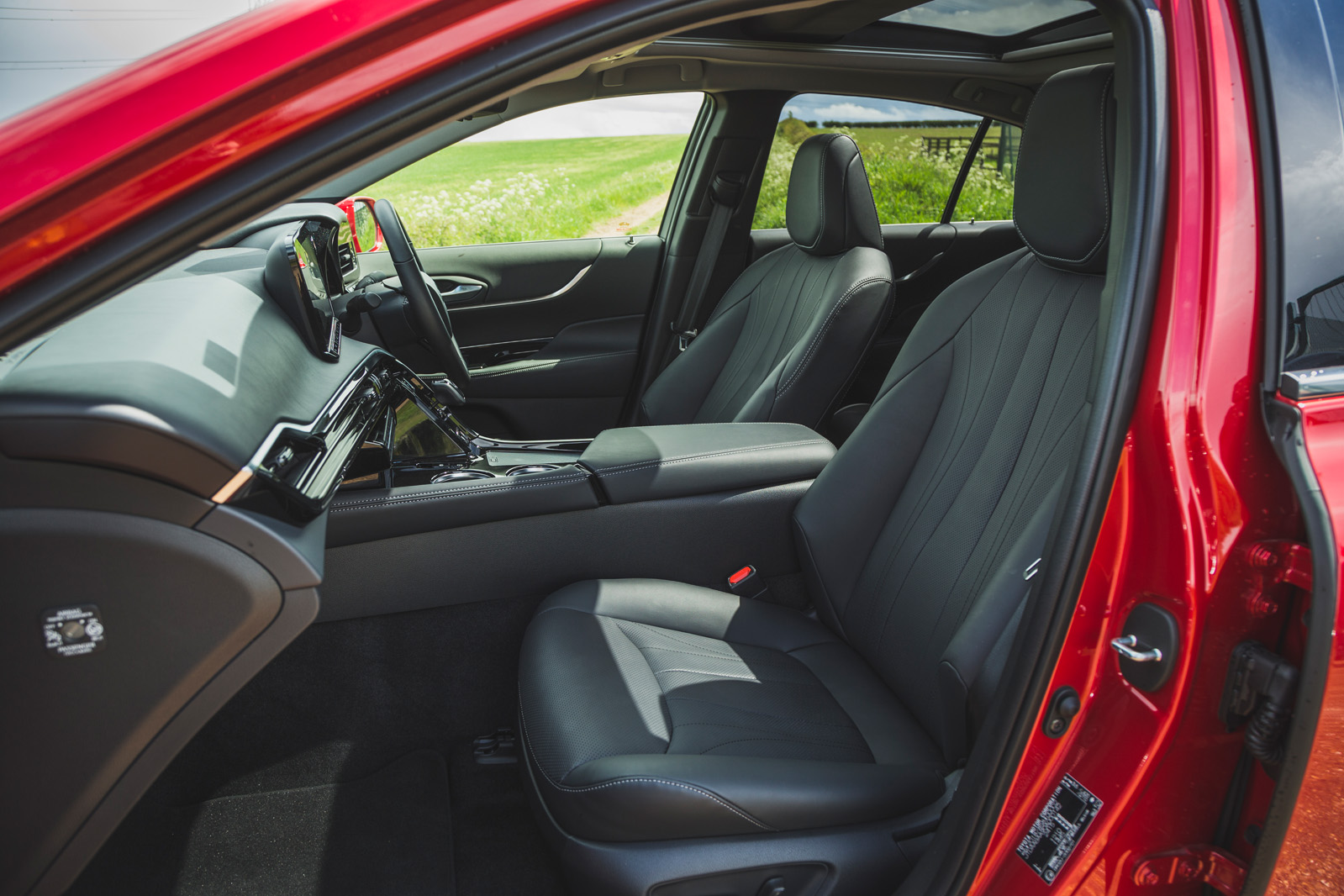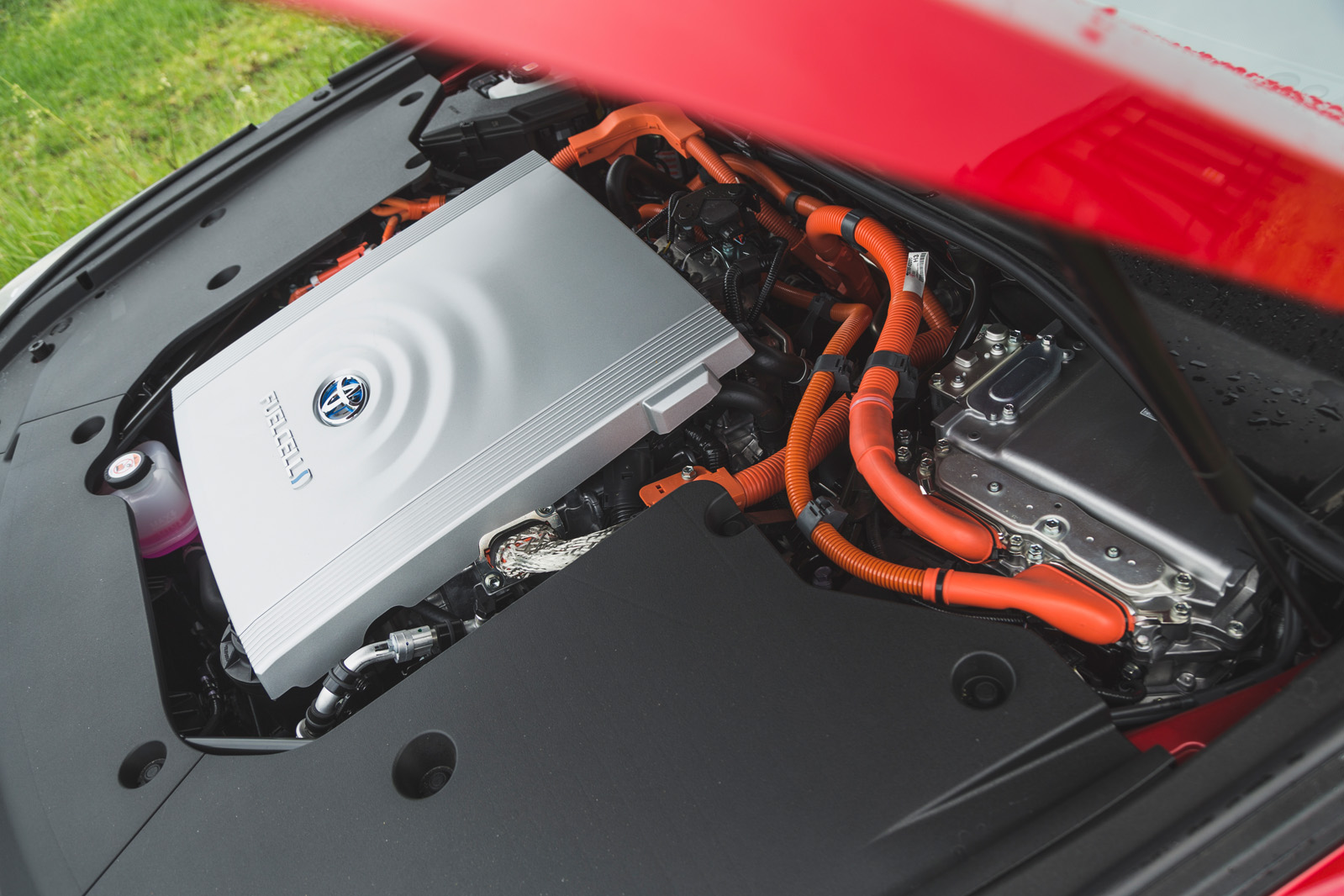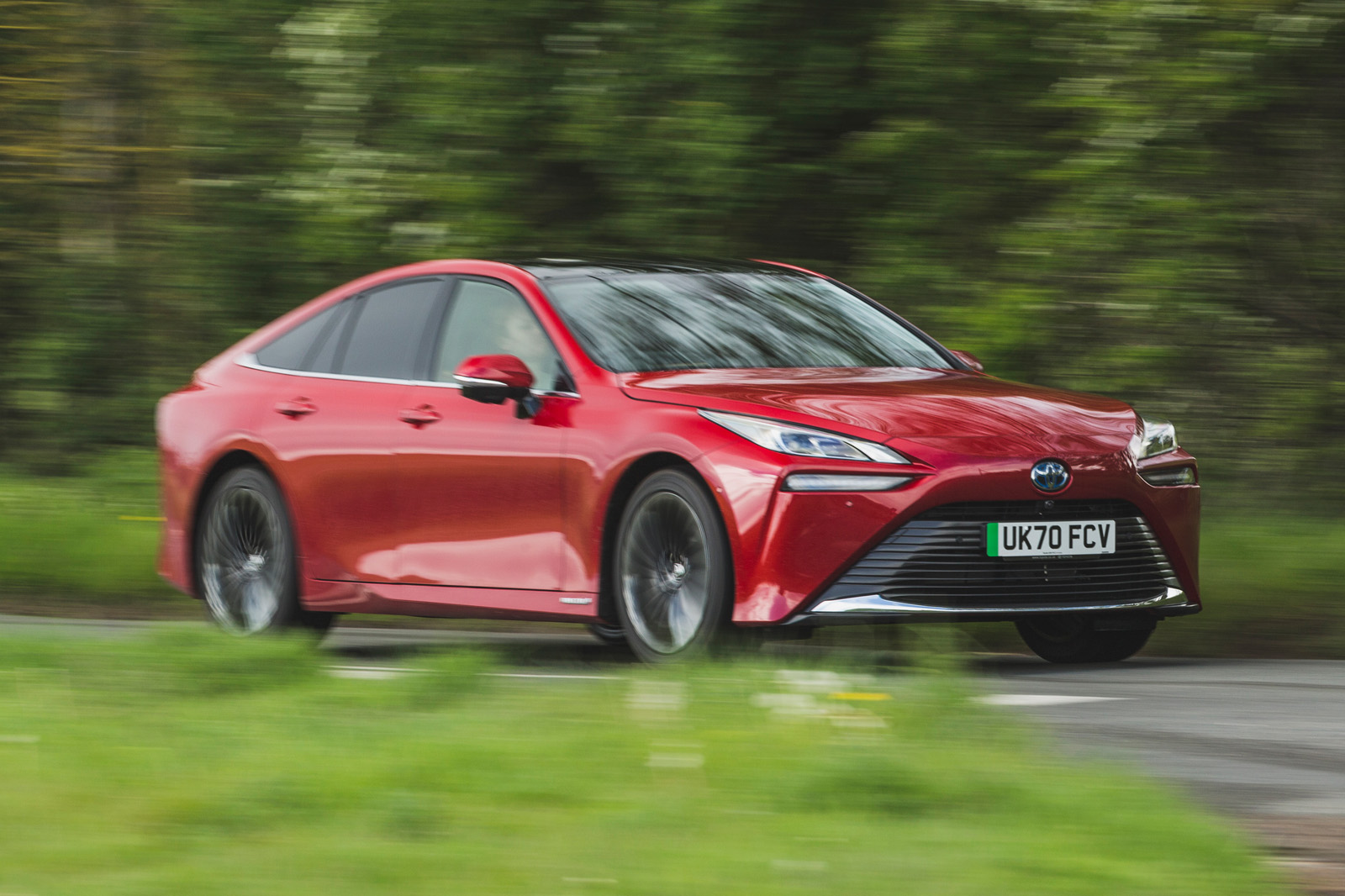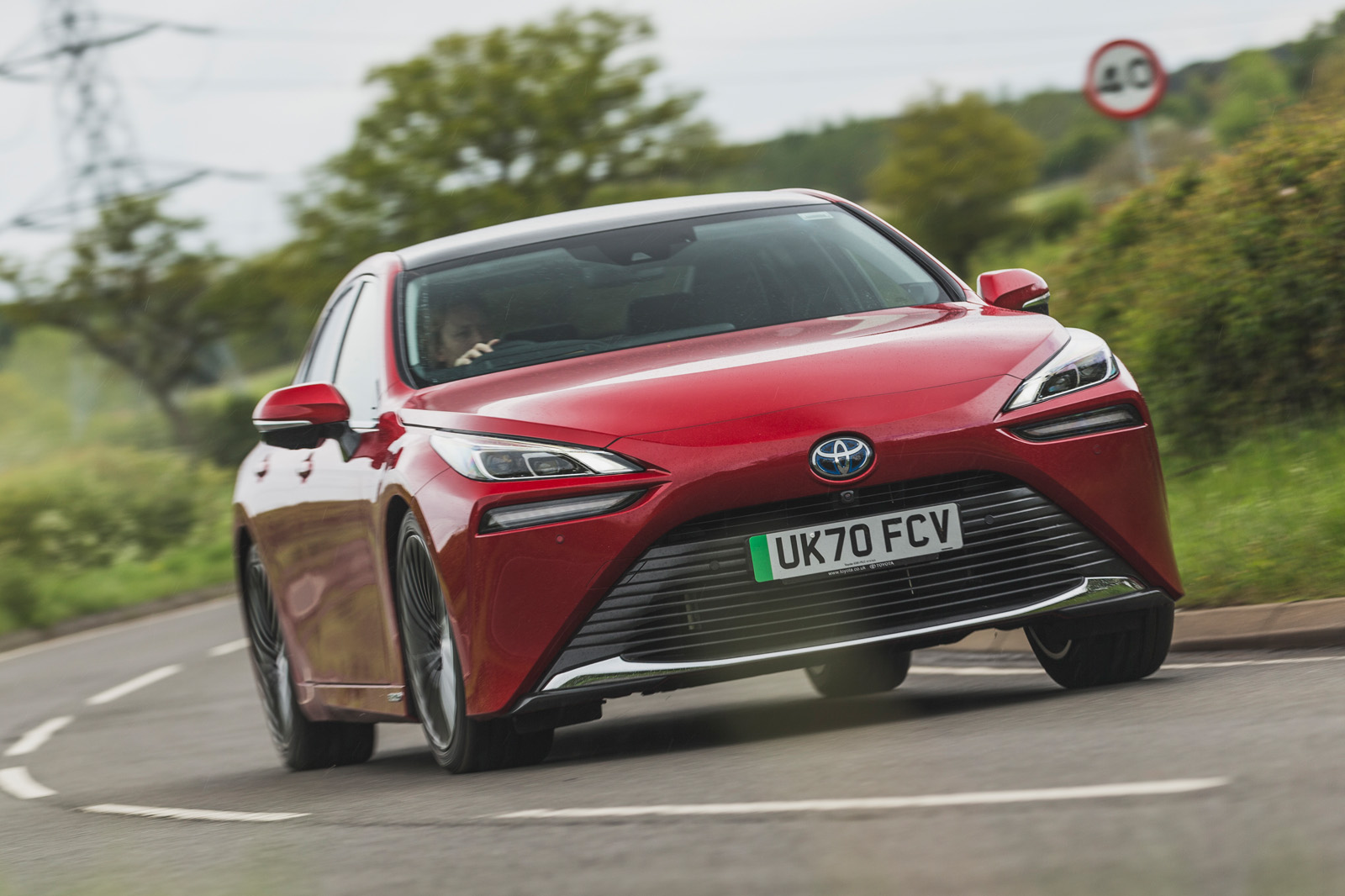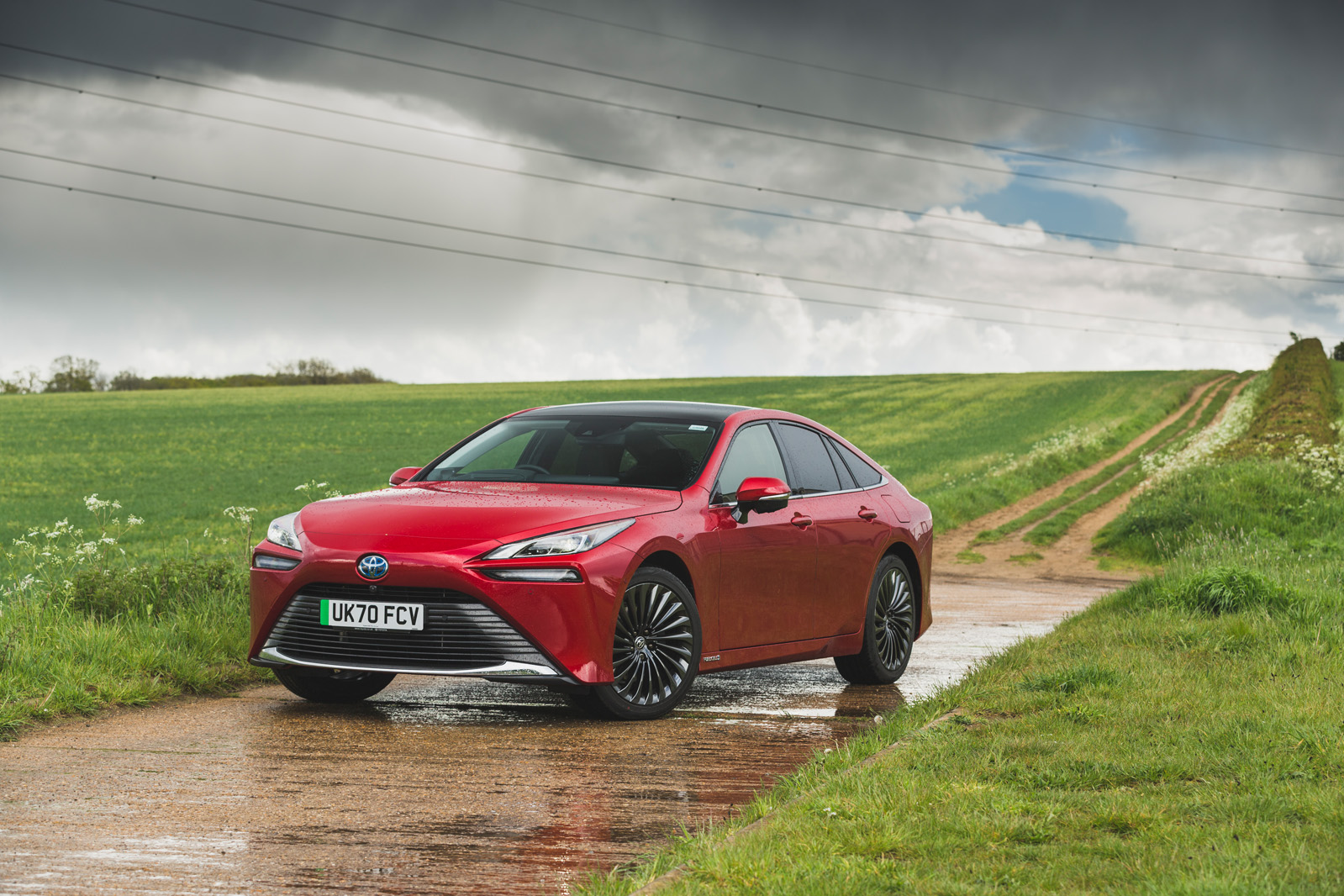The new Mirai has swapped the airy but unsporting Toyota Prius-derived cabin of its forebear for something that exists far more in the traditional GT car mould. This is hardly surprising, given the underpinnings are now related to the Lexus LS.
The scuttle, therefore, sits high and the driver low. The effect is augmented by the additional height of the broad digital screens and the substantial ‘transmission’ tunnel, underneath which sits one of three reinforced fuel tanks, designed to store hydrogen at a pressure of 10,000psi. The Mirai even borrows the asymmetric centre console sweep found in the GR Toyota Supra sports car, which serves to enclose the driver even more securely.
The SofTex-trimmed seats (both heated and ventilated) then strike an appealing balance between softness and support, and the leather steering wheel has plenty of adjustability, allowing it to be brought out towards the driver’s chest. All in, this is an environment you wouldn’t be surprised to find with a long-snouted eight-cylinder tourer, and the supple upholstery lavished on the dashboard and door cards emphasises the feeling of if not luxury then premium quality.
Beyond the gloss black trim used for the centre console, display surrounds and switchgear (of which there is a good level, all clearly marked), you will struggle to find hard plastics inside the Mirai, which just about manages to feel its £60,000 asking price, despite the costs the powertrain must entail. In the words of one tester, material quality is “high-end Toyota, rather than Lexus”, and that’s no bad thing.
Less impressive is the passenger space in the rear and boot capacity. It’s an improvement on the old Mirai, not least because the bench now offers three berths rather than two, but despite the car’s large footprint, there’s easily less leg room than in a BMW 5 Series. And because there’s a hydrogen tank and powertrain equipment below, head room is impinged, with taller passengers reliant on cut-outs behind the panoramic roof. Tesla’s Model S and combustion alternatives do far better.
With the drive battery and electric motor then positioned above the rear axle, and the third and final hydrogen tank beneath the boot floor, luggage capacity is hurt by a boot that is both short and shallow, and there are no split folding seats. Given this cabin’s attributes elsewhere, you could probably look at the Mirai in one of two ways: unusually spacious coupé or considerably compromised saloon.
Toyota Mirai infotainment and sat-nav
The Mirai features an 8.0in digital instrument cluster as standard, though Design Premium models like our test car are upgraded to the sprawling 10.1in display seen here. It’s paired with a 12.3in central touchscreen for an overall effect similar to that seen in recent Mercedes models.
The central display handles the infotainment system, communications and navigation but can also show several useful schematics relating to the powertrain’s behaviour and, if necessary, can split the screen among several functions. Additionally, specific functions can be slid from one side of the screen to the other, giving the passenger easier access. A 14-speaker JBL sound system is also standard, as is Android Auto, Apple CarPlay and a three-year subscription to Toyota’s Dynamic Navigation software.
Overall, however, this is not among the finest systems in the class, and is notably outperformed both in terms of sharpness and latency by BMW’s iDrive and Mercedes’ MBUX offerings.


